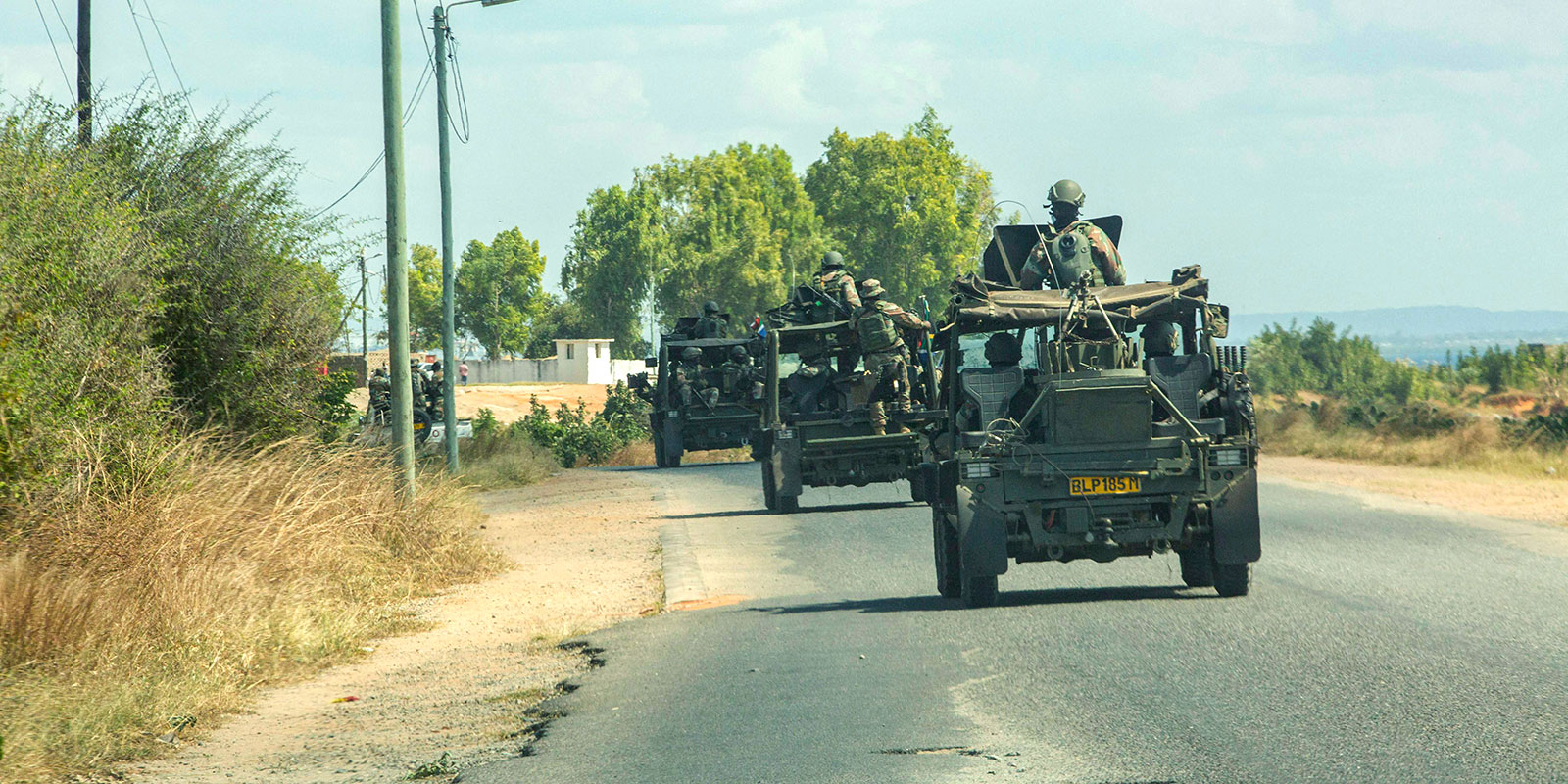The Rwandan forces began operations alongside the Mozambique Armed Defence Forces (FADM) almost immediately without much time spent on orientation, intelligence-gathering, or on-the-ground preparation. This is, to say the least, a risky approach and not something usually done for missions like this.
Rwanda’s approach in #Mozambique was risky, but it is also testament to what can be achieved by a small, well-trained, and highly-mobile force with clear objectives #CaboDelgado @darren_olivier
Tweet
It appears likely that Mozambique requested such rapid action from Rwanda in order to change the facts on the ground and clear out the zone around Total’s gas project, so as to remove the need for SADC forces to deploy into those same areas. The motivations are still unclear, with multiple interpretations offered ranging from the charitable (frustration with a slow SADC deployment) to the uncharitable (wanting less external attention on, among others, illicit networks in the area).
After all, Mozambique knew that the multinational SAMIM was not planning to go into action immediately, but rather pursuing a phased deployment that would commence with support to the FADM before attempting direct combat operations. The report of the SADC technical task team that was sent to the country after the takeover of Palma proposed the following four-phase rollout:
- Phase 1: Intelligence assets (Land, Air and Maritime) and personnel be deployed in support of FADM intelligence in order to gain in-depth understanding of the enemy.
- Phase 2: Immediate deployment of Special Forces and naval assets to conduct targeted operations and eliminate maritime crime in the Area of Operation respectively.
- Phase 3: Pacification Operations.
- Phase 4: Withdrawal.
SAMIM’s approach has thus been cautious and considered, beginning with the gathering of intelligence from aerial reconnaissance and special operations forces patrols before conducting any combat operations. A joint forces headquarters was set up first in order to allow command staff from the contingent countries to get to know each other, establish operational protocols, and create new tactical plans based on information from the air & special operations units.
It is a textbook approach for taking a multinational force into an uncertain long-term deployment. But as a result it is inevitably and painfully slow, taking months from initial deployment to the commencement of combat operations even in the best case scenario. So regardless of whether this deployment is in line with original planning or not, the situation makes SADC look ineffective. Not to mention that all the justifications for a cautious deployment are cold comfort to those displaced by the fighting or living in insurgent-controlled areas, or to a Mozambican state deprived of revenues from the natural gas project.
Rwanda’s approach was risky, but it is also testament to what can be achieved by a small, well-trained, and highly-mobile force with clear objectives. In just over a month its forces have cleared the insurgents from large swathes of territory and retaken key towns including Mocímboa da Praia. Their intervention so far has been a success, with Rwandan troops being tactically flexible, well-disciplined, and able to operate with a light footprint and minimal support. This should provide a potent lesson for SADC and a rethink of how the SADC Standby Force is structured and how interventions are planned. Being able to achieve early success in a situation like this is crucial.
However, we should be careful to assume that these initial successes mean that the insurgency is close to being defeated. It is not. As experience in dozens of other similar conflicts has taught us, counter-insurgency is a slog, requiring months and years of stabilise, build, and hold operations to not only displace insurgents, but deny them access to the population and interdict their supply chains. History is replete with examples of armies declaring victory prematurely after a few early recaptures of territory only to have the insurgency re-emerge again and again to overwhelm demoralised state forces.
For now, the insurgency has mostly retained its strength in both numbers and equipment despite the Rwandan advances, by using delaying tactics that give them time to melt away into either the deep and nearly impenetrable forests around the Messalo River or across the border into Tanzania. The Rwandan force is also too small to hold all the territory it clears, so it has had to hand them over to the same Mozambican military and police units that struggled to hold them in the first place.
SAMIM’s structure is better suited to a long-term counterinsurgency campaign, especially with its naval and air assets to interdict supply lines, but it is unclear how much freedom of action it will have to act widely and effectively once the Rwandan intervention is complete.
Darren Olivier is a director at African Defence Review, a conflict research consultancy.


